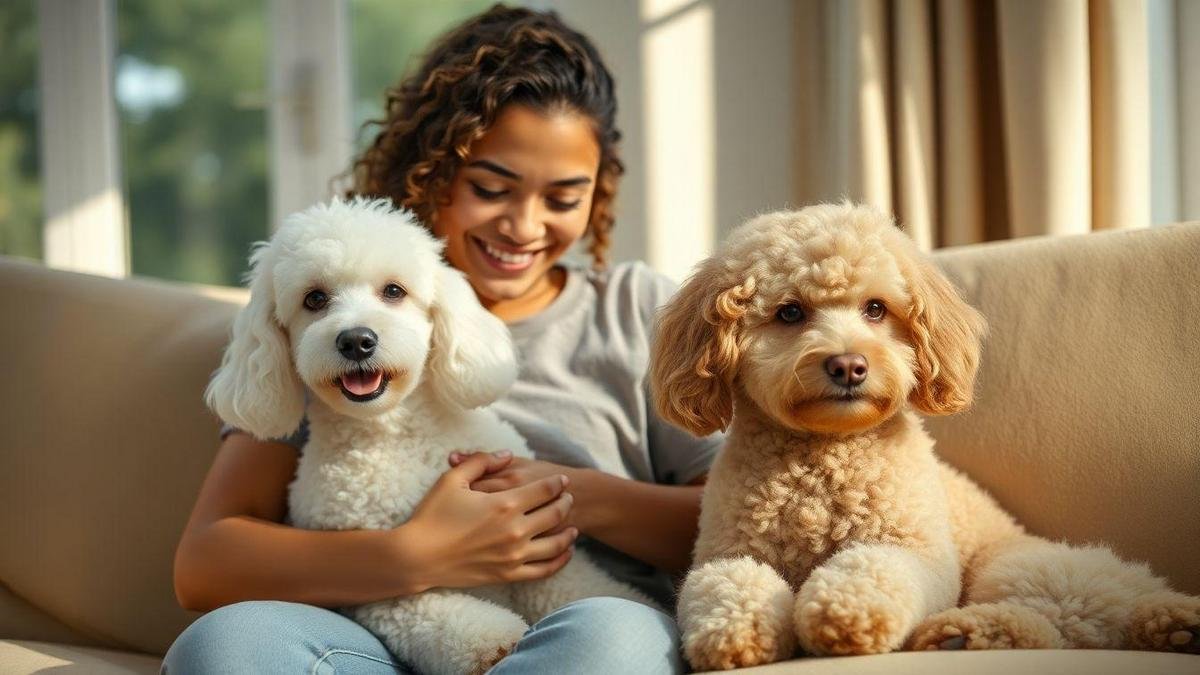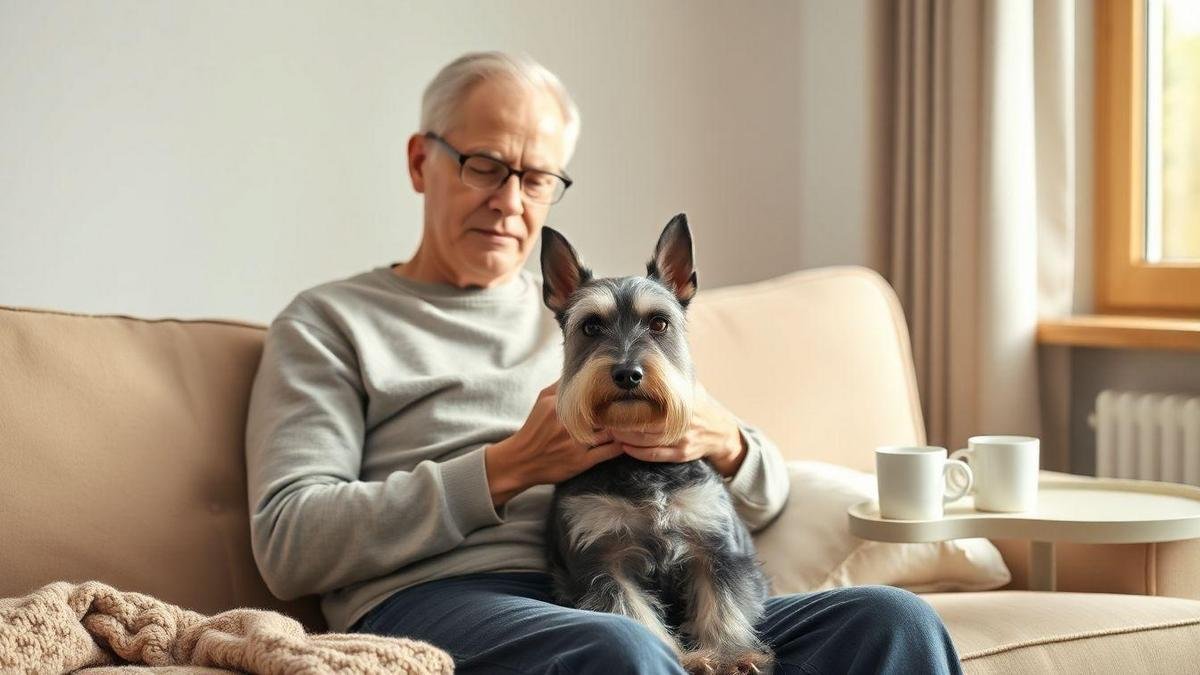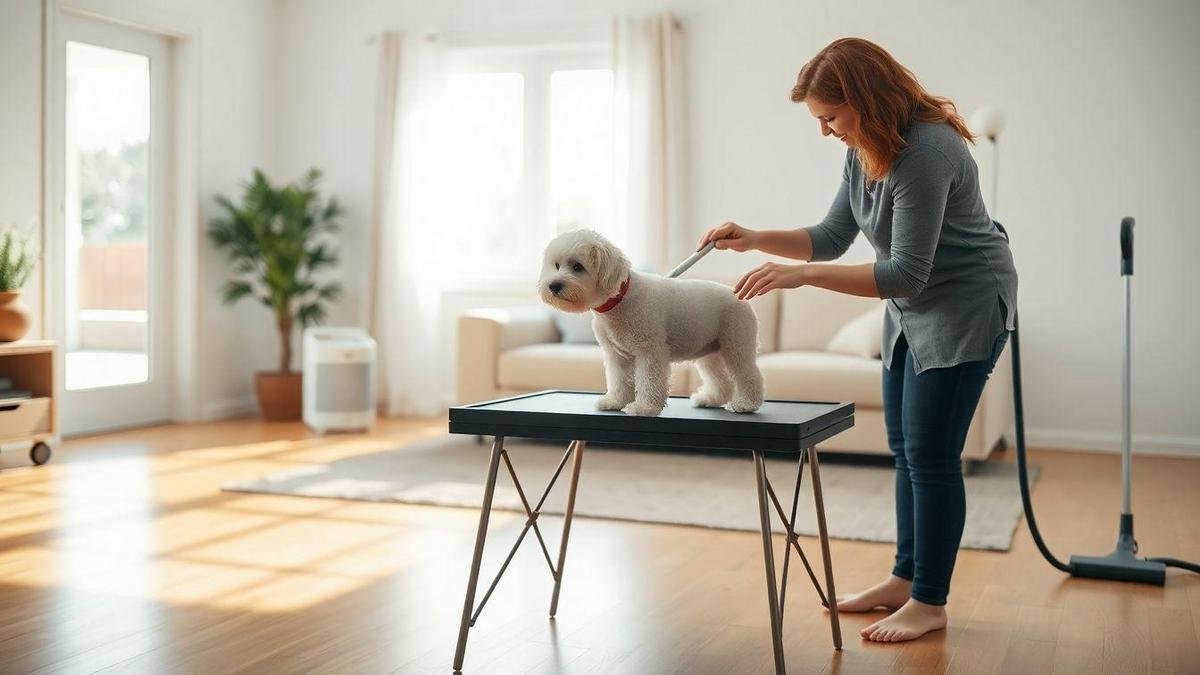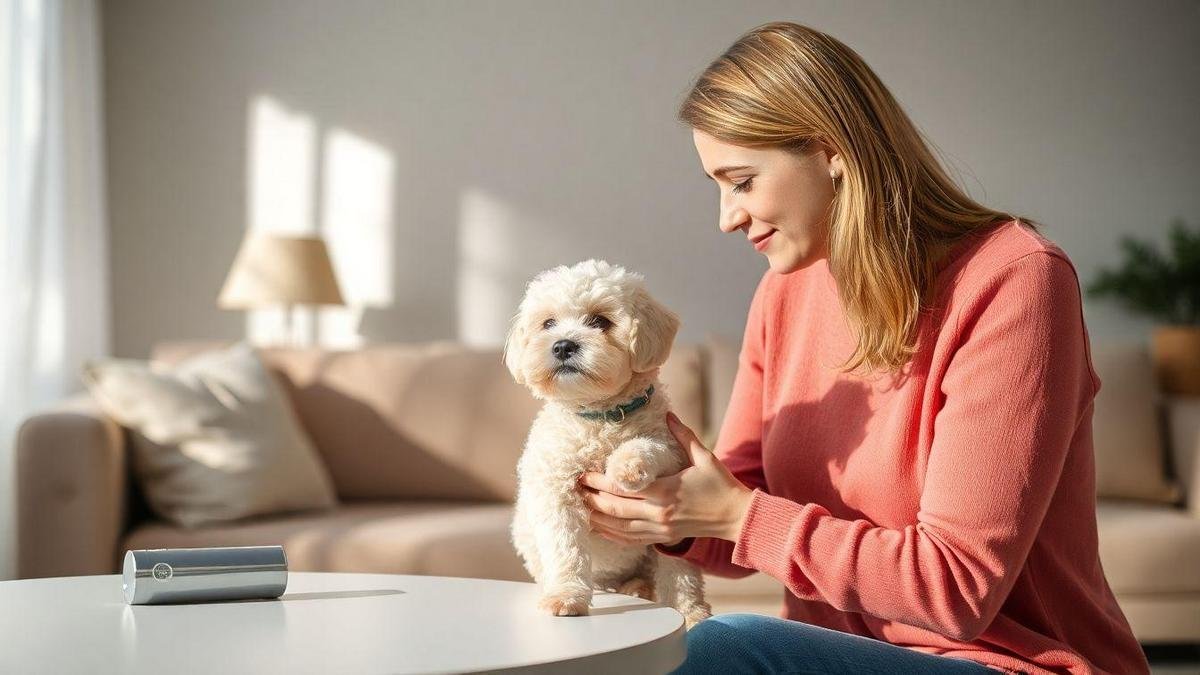Raças de cães hipoalergênicos para quem sofre de alergias
Raças de cães hipoalergênicos para quem sofre de alergias is what I search for when I want a dog but need real allergy relief. I compare low-shedding breeds, do short visits to test my reactions, and plan grooming, cleaning with HEPA filters and routine cleaning, and regular baths to cut allergens. I trust poodles and poodle mixes, like Labradoodles and Cockapoos, for their non-shedding or low-shed coats. For small homes I lean toward Bichon Frise; for a sturdier, wiry coat I favor Schnauzers. I talk to breeders and my allergist and try a foster if I need to be sure. This article shares what I learned and how I choose a dog that keeps my home healthy and my heart full.
Key takeaway
- I feel less itchy with low-shedding breeds like poodles.
- Regular grooming and baths calm my allergies.
- HEPA vacuums and air purifiers keep airborne dander down.
- I always do short test visits to check my reaction before adopting.

How I choose Raças de cães hipoalergênicos para quem sofre de alergias
I look for low-shedding dog breeds for allergy relief
I start by focusing on low-shedding dogs. Hair and dander spread allergens—fewer loose hairs usually means fewer airborne particles. I look for curly or tight coats and balance that against grooming needs (some low-shed dogs need frequent brushing or clipping).
What I watch for:
- Shedding level (low / moderate / high)
- Coat type (curly, single coat, wiry)
- Grooming time I can commit to
My simple test: spend an afternoon with a candidate dog. If my sneezing and itchy eyes drop, that’s a strong signal.
Quick comparison of allergy-friendly breeds
| Breed | Size | Shedding | Quick note |
|---|---|---|---|
| Poodle (Mini/Standard) | Small–Large | Low | Smart, needs grooming |
| Bichon Frise | Small | Low | Playful, great for apartments |
| Portuguese Water Dog | Medium | Low | Active, loves water |
| Maltese | Small | Low | Gentle, needs daily brushing |
| Schnauzer | Small–Medium | Low | Wiry coat, regular clipping |
| Basenji | Medium | Low–Moderate | Less odor, active |
I use this table like a map: match coat type and energy level to my routine and home.
I test with short visits to see my reaction before adopting
I never adopt without a trial. Short visits of 30–60 minutes let me note sneezing, itchy eyes, or breathing changes. I try different activities—sitting on the couch, playing, and letting the dog curl up near me. Repeat visits at different times and after grooming give a clearer picture.
Checklist for visits:
- Spend at least 30 minutes in the same room
- Sit on furniture the dog uses
- Visit after grooming and before grooming
- Track symptoms for 24–48 hours after

Why I trust poodle and poodle-mix hypoallergenic dogs
Poodles and poodle mixes: non-shedding advantages
I read about Raças de cães hipoalergênicos para quem sofre de alergias when researching. I chose a poodle-mix because of its non-shedding coat; I saw fewer hair clumps and sneezed less after a few weeks. Their coats tend to trap loose hair and dander, so regular brushing and scheduled baths make a big difference.
| What I check | Poodle / Poodle-mix | Typical shedding dog |
|---|---|---|
| Shedding level | Low / non-shedding | High |
| Indoor hair | Less visible | More visible |
| Grooming needed | Regular trimming & brushing | Less frequent brushing |
Common poodle mixes I see recommended:
- Labradoodle — Often wavy/curly, traps loose hair
- Goldendoodle — Curly or wavy, many low-shed coats
- Cockapoo — Soft, low-shed coats common
I focus on the dog’s coat and real-life allergy response rather than the label alone.
Meeting breeders
I meet breeders face to face and ask to see records and coat-care routines. A trustworthy breeder shows vaccination records, health clearances, and a grooming plan.
Documents I ask for:
- Vaccination records — shows early care
- Health screenings — hips, eyes, genetic tests
- Grooming plan — how often to trim and brush

How small hypoallergenic dog breeds for allergies fit my home
Bichon Frise: compact and allergy-friendly
Living in a small apartment, I found the Bichon Frise often appears in searches for Raças de cães hipoalergênicos para quem sofre de alergias. They shed less and their coat traps dander, which reduced the hair on my couch and the sniffles after long days home.
| Trait | How it fits my apartment |
|---|---|
| Size | Small — fits furniture & lap time |
| Shedding | Low — less hair on floors & clothes |
| Energy | Moderate — short walks and play |
| Grooming | Regular brushing and trims needed |
I still remember: no dog is completely allergy-free, but the right routine helps a lot.
Grooming and exercise plan for small hypoallergenic dogs
Simple routine I follow:
- Brush 2–3× weekly
- Bathe every 3–4 weeks
- Professional trim every 6–8 weeks
- Walks/play 20–30 min daily (see tips for keeping an indoor dog active on a busy schedule at keeping your dog active)
- Wash bedding weekly
These steps reduced my sneezes and kept the apartment livable.

How the Schnauzer hypoallergenic dog breed helped me manage symptoms
Schnauzers: wiry coat, low airborne dander
I chose a Schnauzer because its wiry coat traps loose hairs and lowers airborne dander. After a week of brushing and wipe-downs, my eyes watered less and sneezes dropped.
| Coat type | Shedding level | Why it matters |
|---|---|---|
| Wiry (Schnauzer) | Low | Holds loose hair, less dander airborne |
| Short smooth | Medium | Hairs fall but are easy to remove |
| Long silky | High | More loose hair and dander spread |
Grooming routine I follow:
- Brush 2× weekly with a slicker brush
- Bath every 4–6 weeks (mild shampoo)
- Professional trim every 6–8 weeks
- Wipe paws/whiskers daily after walks
I also run a HEPA vacuum twice weekly and wash bedding weekly.

How I manage care to reduce allergens with non-shedding hypoallergenic dog breeds
HEPA filters and regular cleaning
I run a HEPA air purifier in the main room 24/7 and boost it when we’re home. I dust with a microfiber cloth and mop hard floors damp. Open windows when outdoor pollen is low.
| Item | How I use it | Benefit |
|---|---|---|
| HEPA purifier | On in living area; filter changes per manual | Cuts airborne dander & dust |
| Microfiber cloths | Weekly quick daily wipe | Picks up tiny particles |
| Hard-floor mop | Twice weekly | Removes settled allergens fast |
Also, when using cleaning products I follow guidance to keep pets safe during cleaning so I don’t add irritants to the air.
Bathing and grooming to cut allergens
- Bathe every 3–4 weeks with gentle, vet-approved shampoo
- Brush between baths to trap dander on the brush, not in the air
- Wipe paws and coat with a damp cloth after walks
I learned this by experience: adding wipes and regular baths noticeably reduced eye itching and sneezing.
Wash bedding & HEPA vacuuming
- Wash bedding weekly in the hottest safe setting
- HEPA vacuum floors and upholstery 2× weekly in high-use areas
Small, consistent actions beat occasional deep cleans.

How I test my allergy fit before adopting Raças de cães hipoalergênicos para quem sofre de alergias
Short visits and tracking symptoms
Start with 15–30 minute visits wearing a clean shirt. Track:
- Sneezing, itchy eyes, runny nose, skin itching
Write notes immediately and again at 24–48 hours. Look for patterns, not single events.
Symptom checklist (rate 0–5):
| Symptom | When to check |
|---|---|
| Sneezing | During / 24–48 hrs after |
| Itchy eyes | During / 24–48 hrs after |
| Runny nose | During / 24–48 hrs after |
| Skin itching | During / 24–48 hrs after |
Talk to your allergist
I discuss whether my reactions are to dander, saliva, or pollen on fur. My allergist helps decide tests and short-term meds for visits.
Questions I ask:
- What test do you recommend?
- Are my symptoms likely from hair, dander, or something else?
- What meds should I try before visits?
- How long should a trial be?
Formal testing or trial foster if symptoms persist
If short visits still cause problems, I choose either testing or a trial foster.
| Option | What it measures | Timeframe | What I learn |
|---|---|---|---|
| Skin prick test | Immediate IgE response | 1 day visit | Which allergens trigger me |
| IgE blood test | Antibodies to allergens | 1–2 days for results | Confirms sensitivity level |
| Trial foster | Real-life home exposure | 2–6 weeks | Daily reaction and lifestyle fit (also observe environmental enrichment needs) |
During a trial foster I limit contact at first, keep hard floors, wash linens often, and record meds and results.
Conclusion
Wanting a dog while managing allergies is possible. I followed steps for Raças de cães hipoalergênicos para quem sofre de alergias: choosing low-shedding breeds like poodles, Bichon Frise, and Schnauzers, using consistent grooming, scheduled baths, and a HEPA routine. Short test visits, honest talks with my allergist, and a trial foster when needed gave me confidence. No dog is zero-allergen, but the right breed plus steady care made a world of difference for me.
If you want practical tips and real-life stories, visit https://blogcraelo.com.
Frequently asked questions
Q: Which dog breeds are best for allergy relief?
A: I often recommend Poodles, Bichon Frise, Maltese, Schnauzers, and Portuguese Water Dogs—they shed less and can ease symptoms.
Q: Do hypoallergenic dogs stop allergies completely?
A: No. They reduce triggers but don’t cure allergies. Test and spend time with a dog first.
Q: How should I care for a hypoallergenic dog?
A: Groom weekly, bathe every 3–4 weeks, vacuum with a HEPA vacuum, and run an air purifier.
Q: Are small or large hypoallergenic dogs better for allergies?
A: Size matters less than coat type. Pick a dog you can manage and bond with.
Q: Where can I find Raças de cães hipoalergênicos para quem sofre de alergias?
A: Check reputable breeders, rescue groups, and shelters. Search Raças de cães hipoalergênicos para quem sofre de alergias and meet dogs to test your reactions, or consult breed guides like the one on best breeds by lifestyle.






